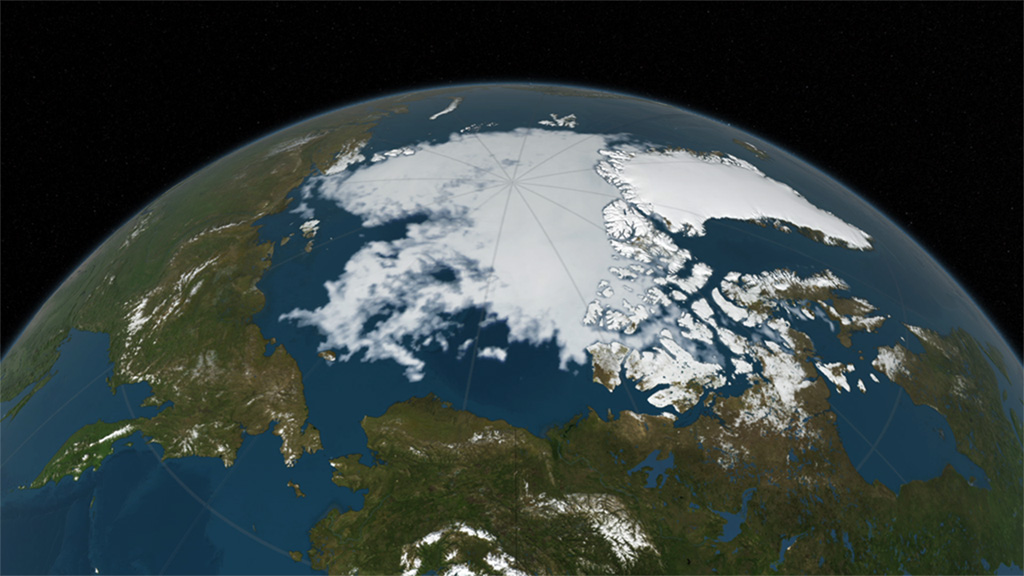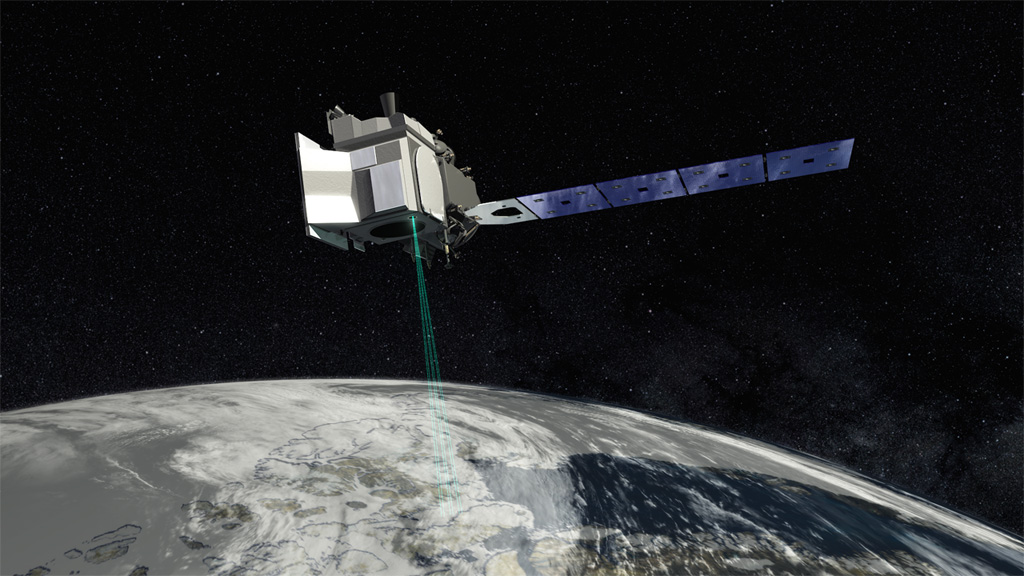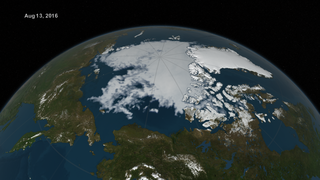Earth
ID: 12349

Arctic sea ice has seen a continued decline in recent decades, and scientists say the downward trend isn't likely to change. In fact, low levels of sea ice coverage have become the new normal. The floating cap of sea ice that blankets the Arctic Ocean and surrounding seas grows in the winter and shrinks in the summer. Since 1978, scientists have monitored changes to the annual maximum and minimum extent of the sea ice cover using satellites. Measurements show the minimum yearly Arctic sea ice extent is declining at a rate of 13.4 percent per decade. This year’s melt season started with a bang, with a record low maximum extent in March and relatively rapid ice loss through May that slowed down in June. Although this year’s decline will probably not end in a new, all-time low (the minimum extent is typically reached in September), scientists expect the area of the Arctic covered by sea ice will rank among the lowest on record. Watch the video to see the evolution of this year's Arctic sea ice cover from its wintertime maximum extent.



The New Arctic




Related Material
Source Material
For More Information
Story Credits
Lead Visualizer/Animator:
Cindy Starr (Global Science and Technology, Inc.)
Visualizer/Animator:
Trent L. Schindler (USRA)
Producer:
Jefferson Beck (USRA)
Lead Writers:
Maria-Jose Vinas Garcia (Telophase)
Kate Ramsayer (Telophase)
Cindy Starr (Global Science and Technology, Inc.)
Visualizer/Animator:
Trent L. Schindler (USRA)
Producer:
Jefferson Beck (USRA)
Lead Writers:
Maria-Jose Vinas Garcia (Telophase)
Kate Ramsayer (Telophase)
Please give credit for this item to:
NASA's Scientific Visualization Studio
Sea ice photos courtesy of NASA/GSFC/Kate Ramsayer
NASA's Scientific Visualization Studio
Sea ice photos courtesy of NASA/GSFC/Kate Ramsayer
Short URL to share this page:
https://svs.gsfc.nasa.gov/12349
Keywords:
SVS >> App
NASA Science >> Earth
https://svs.gsfc.nasa.gov/12349
Keywords:
SVS >> App
NASA Science >> Earth









